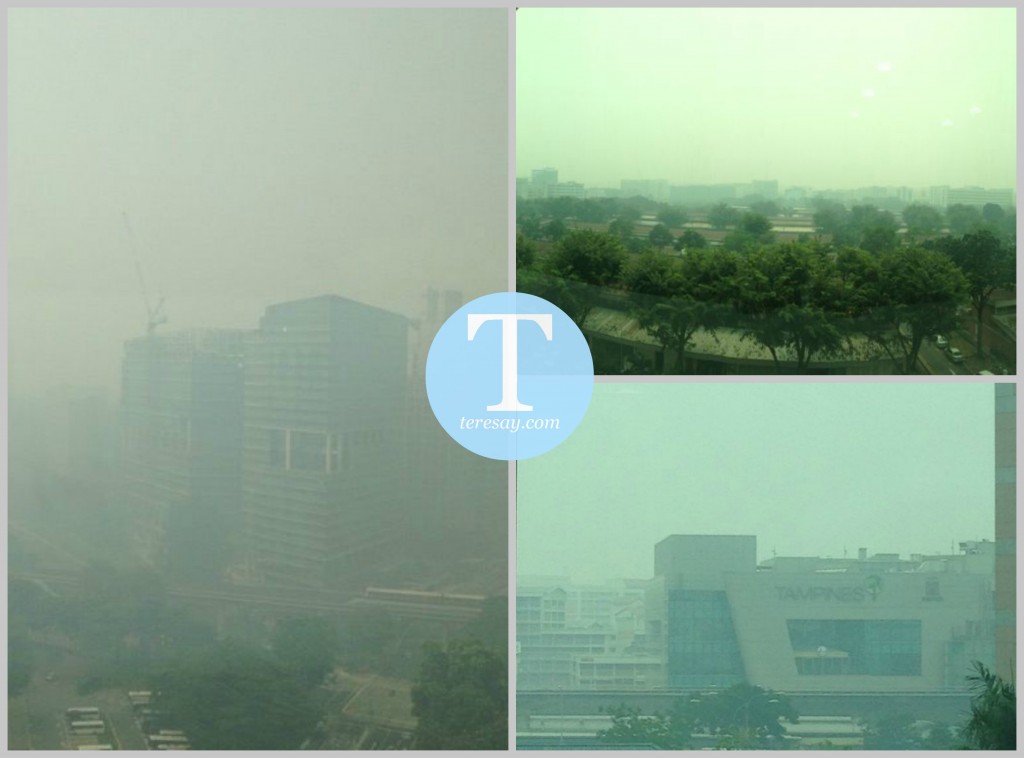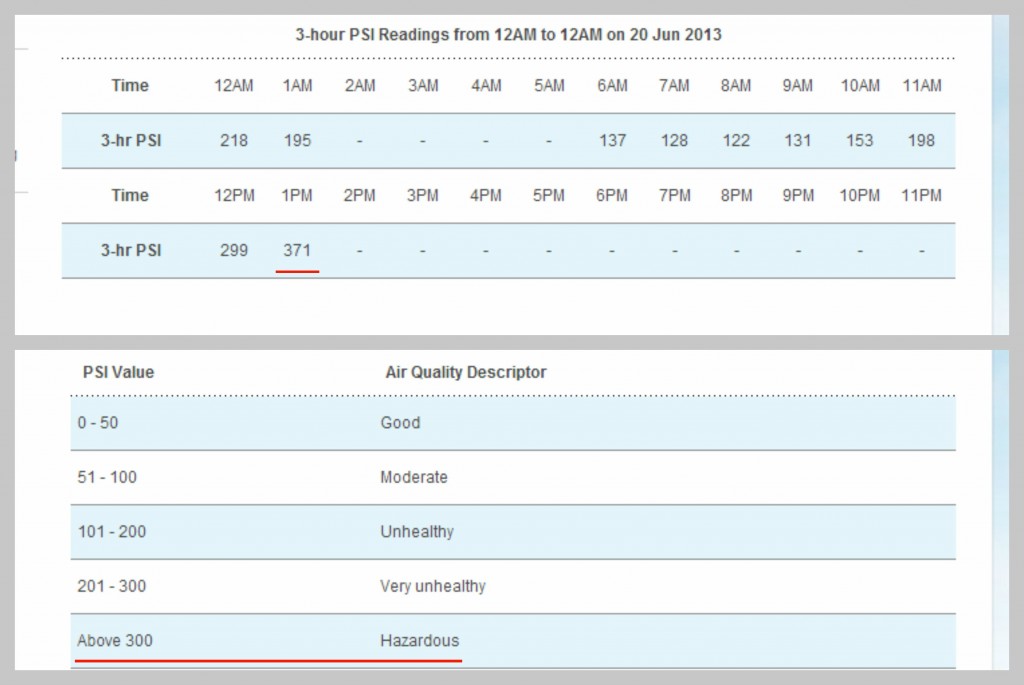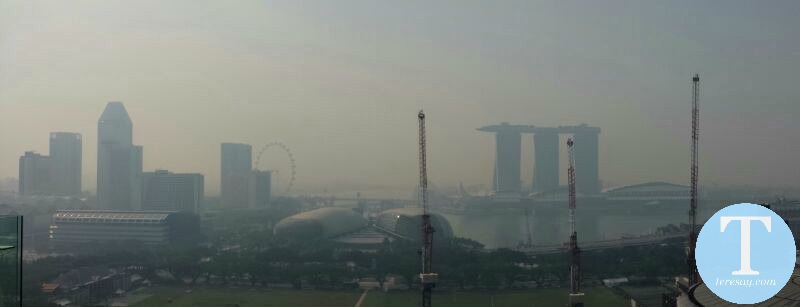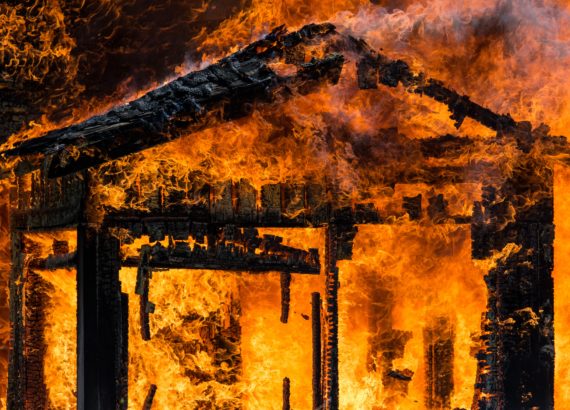Singapore Haze: How Such Occurrence Affects Human Health
The current Singapore haze has resulted to an all-time high record of air pollution in the country. Singapore’s Pollutant Standard Index (PSI) recorded a reading of 371 which is way past the hazardous classification that starts at 300. This reading persisted for three hours before settling into a lower reading of 253 which still falls under the very unhealthy classification. In what way can an occurrence of a haze affect human health and the environment?
Source: NEA-Singapore
The Background Story of the Singapore Haze
Singapore has been experiencing the haze since the beginning of this week. This is not the first time that the country has experienced such an occurrence because of its proximity to Indonesia. It is reported that the farmers of Indonesia still practice traditional slash-and-burn type of agriculture. This practice often results to uncontrolled forest fires which likewise result to smog reaching its neighboring countries, specifically Singapore. The effects on Malaysia, another neighboring country, is currently limited to a southern state near the Singaporean border. This is a regular occurrence specifically during the months of May to October.
This latest haze occurrence is straining diplomatic ties between Singapore and Indonesia because of its severity. With a solution yet to be found to remove the thick smog enveloping Singapore, the problem is expected to continue for several more days. One of the proposed solutions being offered is cloud seeding which intends to release torrents of rain that will hopefully extinguish the raging fires in Sumatra, Indonesia. The success of the cloud seeding operation however will depend on the weather condition. In the mean time health concerns persist.
Health Issues Related to Occurrence of Haze
People who are particularly susceptible to the effects of heavy smog include the following:
1. People with heart or lung disease
2. Children
3. Older adults
Any effect of the haze on human health is primarily caused by the irritant effects of fine dust particles as manifested through:
1. Eye inflammation
2. Nasal irritation
3. Throat irritation
4. Breathlessness/ Asthma or Asthma-like attacks
5. Lung tissue inflammation
The fine particles brought by a haze pose particular risk to humans and animals because they are suspended in the air for longer periods of time, thereby increasing the possibility of inhalation. Less severe haze can result to mild symptoms such as sneezing, coughing, runny nose, or dry throat. Sever haze may result to the early onset of specific diseases in healthy people. It can be aggravating or life-threatening to people with high susceptibility.
What to Do During the Occurrence of Haze
Precautionary Measures:
1. Use a mask specifically when going outdoors. Recommended: N95 mask
2. Close all windows, doors, and any other openings that will allow haze to enter your home or office building.
3. Try to keep particulate levels low by using an air purifier at home or an air cleaning device for buildings with centralized air-conditioning system.
4. People with existing heart or lung condition should take their medicines as directed.
5. Do not exacerbate the physical condition by smoking or lighting anything that burns such as a stove, fireplace, or candles.
6. Using a wet towel to cover the nose and mouth can also help prevent inhalation of particles. Using iced water for the towel provides cooling benefit.
Critical Situations:
1. People with existing heart and lung condition should stay indoors and decrease physical activity. During severe haze, even healthy people are advised to do the same.
2. Listen to advisories provided by the concerned government agency in relation to the use of respiratory masks and air-cleaning devices.
3. In extreme haze conditions. going outside will require the use of respirators instead of surgical masks because of the better seal and protection they offer to the nose and mouth against entry of pollutants.
4. People who experience worsening symptoms must consult a doctor immediately.
5. Whatever you do, DO NOT PANIC as panicking can induce breathlessness that can lead to aggravated situations.
My Say
Haze, because of its accompanying pollutants has serious implications both on health and the environment. There is a need to find a less-harmful way of clearing lands aside from burning if this is the cause of this severe haze. Haze has been a critical problem in Southeast Asia since 1991. The Agreement on Transboundary Haze Pollution has been signed in 2002 by all ASEAN countries except Indonesia. Indonesia is said to be educating its farmers about the possible alternatives to burning. Let us all hope that the solution will come soon enough.
















bellavidaletty
It’s wonderful you are bringing attention to such an important issue. I really hope the government implements laws to correct this problem for the sake of the peoples health.
Teresa Martinez
I hope so too. A more permanent solution may be needed to address this problem.
ErikaRodica.com
My friends have a flight to Sinagpore this Saturday. I hope the haze clears up already so that they could enjoy their travel. I’m just glad we don’t have this here in the Philippines.
Teresa Martinez
Let’s hope that it clears out by then.
Nessie
Awww.. this is scary.. I got a lot of friends in SG and they scared too. Good thing we dont have this here in the Philippines.
Teresa Martinez
I hope we never do. Our country has so much environmental problems to face as it is.
aylin'sblog
I heard the news from my friends working at SG. But it is sad to hear that even in cases like this they are still required to work. Hoping that someday, SG realize that they must think the safety of the people first before having the thinking of “business as usual.”
Teresa Martinez
I think that is pretty much the usual situation anywhere even here in our country. School classes are easily suspended but never work. Of course, it is quite troubling if we have loved ones there.
joyfelizardo
I feel bad for them. For such a small country who have been responsible and disciplined when comes to taking care of the environment, neighboring countries should help them out with this issue.
Teresa Martinez
Let us hope that the countries in the area can work together in finding the solution.
joy | chemist2writer
That is really scary – even just to imagine what kind of chemicals are mixed in the air to produce such a haze 🙁 To be tested and marked as “hazardous” now that can really be alarming 🙁 I hope something can still be done to control the problem.
Teresa Martinez
I think solutions have been identified but the thing is there are other concerns that branch out from the proposed solutions so these countries really have to talk among themselves.
KIM NIEVES (misskimkong.tumblr.com)
Neighboring countries should stop the slash and burn method! Kawawa yung mga may respiratory problems!
Teresa Martinez
It is hoped that with this recent haze incident, harmless ways of clearing out lands can be chosen over this method.
serene shikukeza
I think the government should make a long term plan with regards to this because they just couldn’t point their fingers to Indonesia everytime this haze would happen. Too many people are already affected in their country and too many Filipinos are working there.
Teresa Martinez
Unfortunately, the solution seems to depend on the cooperation among neighboring countries and cannot be handled by only one. The leaders of the affected countries need to talk.
Roch
Yeah this was the haziest Singapore I’ve ever seen. Whoa when I was living there, we could see haze like thrice a week in the mornings but these would eventually die out when the sun comes. This one’s quite alarming.
Teresa Martinez
It is and I hope that there is something that can be done to solve this instead of just expecting it every year.
april perez
thankfully we didn’t experience this when we were in SG. thanks for sharing this sis, such an informative post.
Teresa Martinez
thanks for visiting.
Filipino Bloggers WW (@fbwgroup)
I am asthmatic, so definitely haze is not good for me. I hope the cloud seeding will be done successfully. I hope they stop polluting the air.
Teresa Martinez
There must be some way that a long term solution can be reached and I hope it can be done soon.
FashionTravels
actually every year we have haze in singapore but totally just felt the haze this year and really thick ones. My frend from singapore live on the 33 floor condo and even the haze goes inside the condos
Teresa Martinez
Yes, I was surprised to learn that this a regular occurrence in Southeast Asia and that it is the news now only because of the severity of the condition.
Franc Ramon
I think it’s time to rid of the slash and burn type farming method. That’s better than he cloud seeding option since it’s dependent on the weather.
Teresa Martinez
A safer method must be effected fast before the problem worsens.
Pal Raine
Love reading post with useful information. Especially me I have weak lungs, if ever I encounter this kind of a scenario I know what to do.
Teresa Martinez
We really need to know what to do in case we are caught in similar situations.
sef tiburcio
I actually heard this news in tv and that’s bad because people most especially the children were greatly affected on this.
Teresa Martinez
I am quite worried really as there are many Filipinos working in Singapore. It would be so difficult to get sick while in another country.